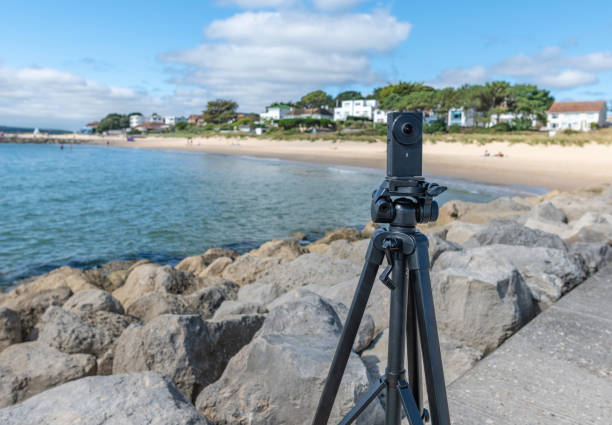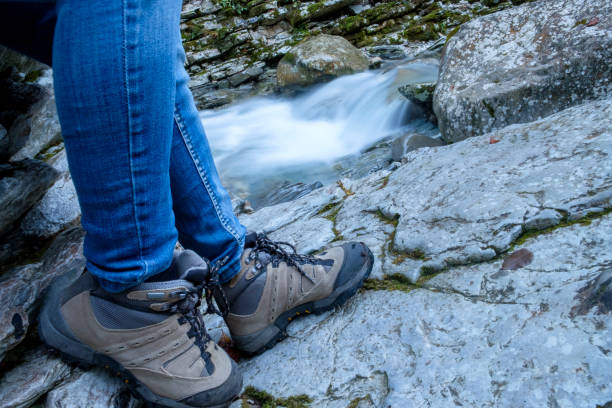5 Best Portable Fish Finders for Every Budget

As an angler, having the right tools can make all the difference between a successful fishing trip and coming home empty-handed. One essential tool that every fisherman should consider adding to their arsenal is a portable fish finder. These handy devices use sonar technology to locate fish underwater, helping you target your casts more effectively.
In this article, we will explore the five best portable fish finders on the market, catering to every budget. Whether you’re a weekend warrior looking for an affordable option or a serious angler willing to invest in top-of-the-line technology, we’ve got you covered. Stay tuned as we dive into the features, pros, and cons of each fish finder, so you can make an informed decision and reel in your next big catch with confidence.
Key Highlights
- Portable fish finders are essential for kayak and ice fishing, offering convenience and advanced technology.
- Consider factors like screen size, water temperature display, sonar transducer type, GPS capabilities, and portability features.
- Top models include Humminbird PiranhaMax 4 DI, Lowrance Hook2, Garmin Striker 4, Deeper PRO+ 2 Sonar, and Vexilar SP200 T-Box.
- Choose a fish finder that aligns with your fishing style, budget, and desired features.
- With various options available, you can find a portable fish finder that meets your specific angling needs.
What to Look for in a Portable Fish Finder
When you’re on the hunt for the perfect portable fish finder, there are a few key features to keep in mind. Whether you’re a beginner or a seasoned angler, understanding what makes a fish finder great will help you choose the right one for your needs. Here’s a breakdown of what you should consider:
Portability
As the name suggests, a portable fish finder should be easy to carry and transport. Look for a device that’s compact, lightweight, and designed with portability in mind. Ideally, it should come with a carrying case or be simple enough to slip into your backpack. Remember, you’ll likely be taking it on boats, kayaks, or even hikes to remote fishing spots, so portability is a top priority. Consider options like the Deeper Smart Sonar PRO+, which is ideal for on-the-go anglers.
Display Quality
A good display is essential for reading sonar data clearly. Look for a fish finder with a screen that offers high resolution and good contrast so you can easily see what’s going on beneath the water. You’ll want a screen that works well in bright sunlight and is readable at various angles—no one wants to squint at a screen while they’re on the water. Models like the Lowrance Hook2 4x SplitShot ensure great visibility even in bright sunlight.
The size of the screen matters, too. Larger screens are easier to read, but they can add bulk. Consider your needs and how much space you’re willing to dedicate to your fish finder.
Sonar Technology
One of the most important features of any fish finder is the sonar technology it uses. Sonar is the tech that helps you “see” underwater, and there are a few options out there:
- Traditional Sonar: This is the most basic form of sonar. It sends out a single frequency signal and looks for fish based on the return signal.
- CHIRP Sonar: This is an upgraded version of traditional sonar and stands for Compressed High-Intensity Radiated Pulse. CHIRP sonar uses a wide range of frequencies, providing better target separation and more detailed images of fish and underwater structures.
- Side-Scan and Down-Scan Sonar: If you’re looking for a more advanced fish finder, you might want to look into these. Side-scan sonar lets you see the area to the left and right of your boat, while down-scan sonar gives you a clear, detailed view of what’s directly below.
For a highly detailed view, consider the Garmin Striker 4 with CHIRP sonar.
Ease of Use
You don’t want to waste time trying to figure out how to use your fish finder. A device with a user-friendly interface and simple controls will make your fishing experience more enjoyable. Look for models with intuitive menus like the Humminbird PiranhaMax 4 DI. Some newer models even feature touchscreen interfaces, which can make adjusting settings on the fly much more convenient.
Battery Life
No one wants their fish finder to run out of juice halfway through a fishing trip. Battery life is a huge factor to consider, especially if you plan on using your device for long hours. Look for models that offer at least 6-8 hours of battery life, and if you’re planning to take it on extended trips, consider a model that lets you swap out batteries or one that charges quickly.
Connectivity
Some of the latest portable fish finders come with Bluetooth or Wi-Fi capabilities, allowing you to sync the device with your smartphone. The Vexilar SP200 T-Box integrates seamlessly with your device for easy access to additional features. This can make it easier to access additional features like mapping, save your fishing spots, or even share data with other anglers. If you’re tech-savvy and enjoy using apps, look for a fish finder that pairs with your phone or tablet.
Waterproofing
Fishing involves water (obviously!), and the last thing you want is a device that can’t handle a little splash. Make sure your fish finder is rated for water resistance or waterproofing. This will protect your device from unexpected dips in the water or even heavy rain. Always check the IP rating to make sure it can withstand your fishing adventures.
Additional Features
Some portable fish finders come with extra perks, like built-in GPS, detailed mapping features, and depth capabilities that can be handy for specific types of fishing. If you like to fish in unfamiliar areas, a GPS feature can help you navigate and mark your favorite fishing spots. Keep in mind, though, that more features usually come with a higher price tag. Devices like the Deeper PRO+ 2 offer detailed mapping capabilities that can be invaluable.
Price
Last but not least, your budget will play a big role in your decision. There are portable fish finders available at a wide range of price points, so think about how much you’re willing to invest in a device. Entry-level fish finders are generally more affordable and provide basic features, while higher-end models will offer advanced sonar technology, more durable designs, and additional features like GPS. Ultimately, you want to strike a balance between your needs and your budget. For those just starting, options like the Lowrance Hook2 provide a solid entry point.
Top 5 Best Portable Fish Finders
Now that we’ve covered the key features to look for in a portable fish finder, let’s dive into the top 5 models currently available on the market. Whether you’re a beginner or a seasoned angler, these options will help you make an informed choice when it’s time to upgrade your fishing gear.
1. Garmin Striker 4

Key Features:
- CHIRP Sonar: Uses a continuous sweep of frequencies for crisper fish arches and better target separation, giving you a clearer picture of what’s beneath the water.
- Waypoint Map: Easily mark and navigate to spots like brush piles, docks, and stumps—perfect for finding those hidden fishing spots.
- Built-in Flasher: This is ideal for ice fishing or vertical jigging, providing classic sonar data in an easy-to-read format.
- Kayak-Friendly: Comes with a kayak in-hull transducer mount, making it an excellent choice for kayak fishing enthusiasts.
- Display Options: Available in 3.5, 5, and 7-inch display sizes, so you can choose the size that fits your needs.
Pros:
- Super simple to use, with a keyed interface and dedicated buttons that make navigation a breeze.
- Works in both freshwater (up to 1,600 feet depth) and saltwater (up to 750 feet depth), providing great versatility.
- Compact and portable—great for anglers on the go.
Cons:
- The smaller 3.5-inch version might not be ideal for those who want a larger screen.
- Some users may find the flasher mode less intuitive for general fishing.
Ideal For:
- Kayak fishermen, beginners, and anglers looking for an easy-to-use, reliable fish finder with essential features.
2. Deeper PRO+ 2 Sonar

Key Features:
- Multiple Beam Options: Choose between wide, mid, and narrow beams for precise targeting of large areas or focusing on specific spots.
- Wi-Fi Connectivity: Reliable and solid connection with your smartphone, so you can enjoy seamless data transmission while on the water.
- Pinpoint Accuracy: With a target separation of 0.4 inches (narrow beam), it offers amazing detail, especially for vertical jigging.
- Built-in GPS: Create bathymetric maps from anywhere—whether you’re on shore, at a dock, or even fishing from the bank.
Pros:
- Wireless design makes it incredibly portable and easy to use anywhere.
- Ideal for serious anglers who need pinpoint accuracy and detailed readings.
- The GPS feature is a game-changer for creating custom maps of your favorite fishing spots.
Cons:
- Requires a smartphone to operate, which may be inconvenient for those who prefer standalone devices.
- Its smaller sonar depth range (330 feet) may not be enough for deep-sea fishing.
Ideal For:
- Elite anglers who want advanced sonar features and the ability to create custom maps while fishing from the shore, kayak, or boat.
3. Humminbird PiranhaMax 4 DI

Key Features:
- Dual Beam Sonar: You can choose between a narrow beam for great detail or a wide beam for better coverage.
- Down Imaging: Get a crystal-clear view of what’s under your boat, from timber and brush to rocks and other underwater structures.
- Tilt and Swivel Mount: Adjust the angle of the viewing area for the perfect view.
- Compact Design: Great for smaller boats or even fishing from the shore.
Pros:
- Down Imaging provides excellent clarity, helping you identify fish and underwater structures with impressive detail.
- Easy to use and highly durable, perfect for anglers who need a reliable device on the water.
- The tilt and swivel mount gives you more control over your display.
Cons:
- The 4-inch display might be a bit small for some anglers who prefer a larger screen.
- Doesn’t offer the advanced sonar features (like CHIRP or GPS) found in pricier models.
Ideal For:
- Anglers who need a simple, reliable fish finder for basic fishing needs and want great image clarity without the complexity of more advanced features.
4. Lowrance Hook2

Key Features:
- SplitShot Sonar: Combines down-scan and wide-angle sonar to give you a more complete view of what’s below.
- Auto-Tuning Sonar: Automatically adjusts settings to ensure accurate readings without the need for constant manual adjustments.
- High-Resolution Solarmax Display: Ensures bright and clear visibility, even in direct sunlight.
Pros:
- Auto-tuning sonar makes setup quick and hassle-free, so you can spend more time fishing.
- Offers double the sonar coverage of most fish finders, making it easier to locate fish.
- The display is easy to read in various lighting conditions, perfect for daytime fishing.
Cons:
- While the display is clear, the 4-inch size may not be sufficient for anglers who prefer larger screens.
- Lacks advanced features like GPS and mapping capabilities.
Ideal For:
- Beginners or anglers who want a straightforward, reliable fish finder without needing to worry about adjusting settings.
5. Vexilar SP200 T-Box

Key Features:
- Smartphone Integration: Turns your smartphone into a fish finder via Wi-Fi connectivity.
- Portable Design: Extremely lightweight and compact, making it easy to carry on any fishing trip.
- Battery-Friendly: Offers up to 6 hours of battery life for a full day on the water.
- Pre-Drilled Holes for Accessories: Allows you to easily add extra accessories as needed.
Pros:
- Affordable and perfect for those who don’t need a high-end, standalone device.
- Easy to use with your existing smartphone, eliminating the need for an extra screen.
- The compact design is perfect for anglers on the go.
Cons:
- Requires a smartphone to operate, which may not appeal to those who prefer a traditional fish finder.
- Limited sonar depth range (ideal for shallow waters).
Ideal For:
- Casual anglers or beginners looking for an affordable and convenient fish finder that works with their smartphone.
How to Choose the Right Portable Fish Finder for You
There’s no one-size-fits-all solution when choosing the perfect portable fish finder. Your ideal device will depend on a few factors like where you fish, how you fish, your budget, and any specific features you need. Here’s how to narrow down your options:
Fishing Environment
The first step in choosing the right fish finder is thinking about where and how you’ll be fishing. Freshwater and saltwater environments have different demands, so you’ll need a fish finder that works well in the conditions you’ll face. For example, saltwater fishing requires a more durable unit that can handle exposure to salt, which can corrode electronics.
If you fish from a boat, you might prioritize a fish finder with larger screens and more advanced sonar options. However, if you prefer fishing from a kayak or from the shore, you’ll need a compact, easy-to-carry device with a quick setup. Some fish finders, like the Deeper PRO+ 2, are designed with portability in mind, perfect for those who fish off a small boat or from a kayak.
Fishing Style
Are you a hobbyist who enjoys a weekend fishing trip, or are you more of a serious, sport fisherman looking to up your game? Your fishing style will play a big part in what features you prioritize. For recreational fishing, a simple, easy-to-use fish finder will do the job. But if you’re sport fishing or even professionally fishing, you’ll want a unit with advanced sonar technology, higher resolution screens, and long-lasting battery life.
For example, devices with CHIRP sonar (like the Garmin Striker 4) provide a clearer picture of what’s below the water, making them ideal for anglers who need precise depth and fish detection.
Budget
Budget is often the deciding factor when selecting a portable fish finder, and there’s a device at nearly every price point. If you’re just starting out and don’t want to spend a lot, there are affordable options like the Lowrance Hook2 that provide solid sonar coverage and are simple to use. On the other hand, if you’re willing to invest in a top-tier unit, there are options with more advanced features like GPS, down-imaging, and better battery life.
Be mindful of the long-term costs too. A device with longer battery life or a high-quality display might cost a bit more upfront but can save you money in the long run by needing fewer battery replacements or providing more reliable performance.
Specific Needs
Take a moment to think about what features you truly need. If portability is at the top of your list, look for a compact, lightweight model like the Deeper PRO+ 2 that pairs with your smartphone and doesn’t require any wires or cables. If you want more advanced sonar capabilities or a device that integrates with GPS, the Garmin Striker 4 with its CHIRP sonar and GPS might be a better fit.
Ease of use also matters. If you’re not tech-savvy, a user-friendly device with an intuitive interface and minimal setup will make your fishing trips a lot more enjoyable. Many fish finders today offer app integration, which can make managing your settings and viewing data a breeze.
Wrapping Up
When picking the best portable fish finder, think about your budget, fishing needs, and how easy it is to use. A good fish finder can make your fishing better by helping you find fish faster. Whether you are new to fishing or an expert, a portable fish finder can really help you have a successful trip. Look for features like portability, display quality, battery life, and depth range to find the right fit for your fishing style.
Do you have any questions or want to talk about your favorite portable fish finder? Please comment below and join the conversation.
Frequently Asked Questions
What is the best portable fish finder?
The Humminbird Ice Helix is one of the top portable fish finders available. It comes with many features. This includes GPS, CHIRP sonar, and a strong design. These qualities make it a great option for ice fishing and open water activities.
What is the easiest fishfinder for beginners?
The Garmin Striker 4 is famous for being easy to use. It has a simple menu and a clear screen. This makes it perfect for people who are just starting out. Make sure to get a package that has a suction cup transducer mount. This will help you set it up quickly.
Is there a fish finder you can use from the bank?
Castable sonar devices, such as the Deeper Pro+ 2 Sonar and the Garmin Striker Cast, are great for bank fishing. These portable tools link to your smartphone or tablet. They provide sonar readings and can even make maps of the area where you are fishing.
What is the best portable ice fishing sonar?
The Humminbird Ice Helix series is very popular with ice anglers. The Ice Helix 9 MSI+ GPS G4N Mega 360 Bundle has great features. It includes live imaging, flasher mode, and a special ice transducer. These features give a detailed image of fish under the ice.
* Voyedy may receive compensation for purchases made at participating retailers linked on this site. This compensation does not affect the products displayed or their order. Learn more here.





